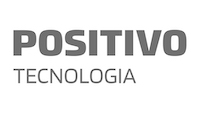DMI Certification FAQs
DMI generates a standard framework for managing and tracking components in a desktop pc, notebook or server. DMI was the first desktop management standard.
The DMI Home Page is a repository of all DMI-related information from the specification to tools to support to the Product Registry of DMI-certified products. Due to the rapid advancement of DMTF technologies, such as CIM, DMTF defined an end of life process for its Desktop Management Interface (DMI), which concluded March 31, 2005.
DMI Conformance:
- Master MIF(ZIP)
- DMI Self-Certification
- DMI Product Registry (DMI Showcase)
DMI Certification FAQs
- How do I certify my DMI 2.0-enabled product and have it listed on the DMTF Web site?
- How long does it take to have my company and product information posted to the DMTF Web site?
- What happens if my product does not pass the conformance testing? Who can I call?
- Can I still do DMI 1.x product conformance testing?
- If I decide not to continue being a DMTF member, will my products that received certification continue to be listed on the Web site?
- Should I be using DMI or CIM certification?
How do I certify my DMI 2.0-enabled product and have it listed on the DMTF Web site?
In order for a DMI-enabled product to be considered certified and to have it listed in the DMI Product Registry on the DMTF Web site, the following must take place.
Review the DMI 2.0 Conformance Requirements document, available on the DMTF Web site, for information on what a DMI 2.0-enabled product must do in order to be conformant with the DMI 2.0 standard specification.
Review the DMI 2.0 Test Plan, available on the DMTF Web site, for instructions on how to test a DMI 2.0-enabled product for conformance.
DMI conformance checking is performed using a tool called COMPCHK2 The supplier of your DMI software (Service Provider and/or component instrumentation) should be able to provide you with a copy. Customers of Smart Technology Enablers, Incorporated (www.enablers.com) may obtain the tool from them. Obtain the COMPCHK2 tool for systems to be tested and run them against the DMI 2.0-enabled product.
If the product passes the testing and is found to be conformant with the DMI 2.0 conformance requirements, download and fill out the DMI 2.0 Product Certification Form found on the DMTF Web site, and fax it to the DMTF.
Upon receipt of the form, the product information will be reviewed and posted to the DMTF Showcase on the DMTF Web site.
How long does it take to have my company and product information posted to the DMTF Web site?
Upon submitting the DMI 2.0 Product Certification form to the DMTF, the product information will be reviewed and then posted to the DMTF Web site. We can usually expect the new product information posting to occur within 1 to 3 business days of receiving the form.
What happens if my product does not pass the conformance testing? Who can I call?
Should your product fail the DMI 2.0 conformance tests, you can contact DMTF support via email here for answers to DMI implementation questions.
Can I still do DMI 1.x product conformance testing?
No, since DMI 2.0 has been available for more than two years and is currently the most up to date version of the DMI standard, the DMTF is no longer facilitating DMI 1.x product testing or certification.
If I decide not to continue being a DMTF member, will my products that received certification continue to be listed on the Web site?
No, if your company decides not to continue with its DMTF membership, or is no longer a DMTF member in good standing, the products currently listed on the Web site will be removed. The DMI product certification listing is considered a value of DMTF membership. The DMI Product Registry on the DMTF Web site was created as a way to give public credit for DMTF members who have participated in the organization and done the work to implement the DMI standards into their products and continue to support DMI and the efforts of the DMTF.
Should I be using DMI or CIM certification?
Ten years ago, DMI was the industry's first desktop management standard. Since its introduction the industry and DMTF have evolved considerably; therefore, DMI has been placed in End of Life maintenance. Active development of new DMI standards ended on December 31, 2003, but bug fixes and spec errata will continue until December 31, 2004. Email support for users and implementers will continue until March 31, 2005. Self Certification program and showcases publication will continue indefinitely; however, no support beyond showcase administration will be offered. DMTF's CIM and Web-Based Enterprise Management (WBEM) specifications were developed to address a broader environment and the additional complexity of today's enterprise and Internet environments, using object-oriented and associative modeling techniques. We are recommending that DMI implementers transition to these newer technologies to provide the next generation of management, monitoring, provisioning and configuration services for systems, software and networks.








